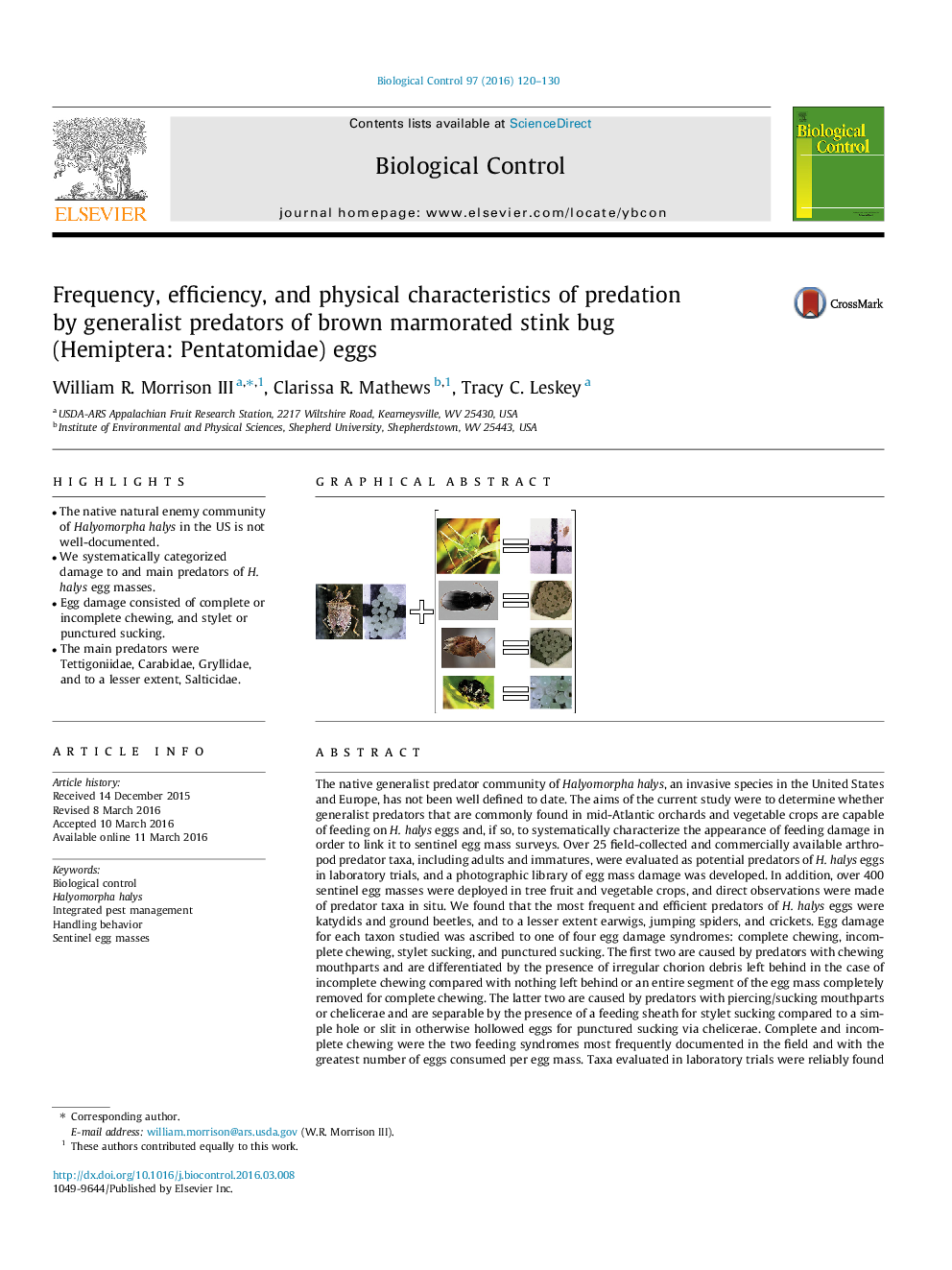| Article ID | Journal | Published Year | Pages | File Type |
|---|---|---|---|---|
| 4503693 | Biological Control | 2016 | 11 Pages |
•The native natural enemy community of Halyomorpha halys in the US is not well-documented.•We systematically categorized damage to and main predators of H. halys egg masses.•Egg damage consisted of complete or incomplete chewing, and stylet or punctured sucking.•The main predators were Tettigoniidae, Carabidae, Gryllidae, and to a lesser extent, Salticidae.
The native generalist predator community of Halyomorpha halys, an invasive species in the United States and Europe, has not been well defined to date. The aims of the current study were to determine whether generalist predators that are commonly found in mid-Atlantic orchards and vegetable crops are capable of feeding on H. halys eggs and, if so, to systematically characterize the appearance of feeding damage in order to link it to sentinel egg mass surveys. Over 25 field-collected and commercially available arthropod predator taxa, including adults and immatures, were evaluated as potential predators of H. halys eggs in laboratory trials, and a photographic library of egg mass damage was developed. In addition, over 400 sentinel egg masses were deployed in tree fruit and vegetable crops, and direct observations were made of predator taxa in situ. We found that the most frequent and efficient predators of H. halys eggs were katydids and ground beetles, and to a lesser extent earwigs, jumping spiders, and crickets. Egg damage for each taxon studied was ascribed to one of four egg damage syndromes: complete chewing, incomplete chewing, stylet sucking, and punctured sucking. The first two are caused by predators with chewing mouthparts and are differentiated by the presence of irregular chorion debris left behind in the case of incomplete chewing compared with nothing left behind or an entire segment of the egg mass completely removed for complete chewing. The latter two are caused by predators with piercing/sucking mouthparts or chelicerae and are separable by the presence of a feeding sheath for stylet sucking compared to a simple hole or slit in otherwise hollowed eggs for punctured sucking via chelicerae. Complete and incomplete chewing were the two feeding syndromes most frequently documented in the field and with the greatest number of eggs consumed per egg mass. Taxa evaluated in laboratory trials were reliably found in tree fruit and vegetable crops. Overall, our work contributes to the identification of key egg mass predators of H. halys in specialty crop agroecosytems.
Graphical abstractFigure optionsDownload full-size imageDownload as PowerPoint slide
